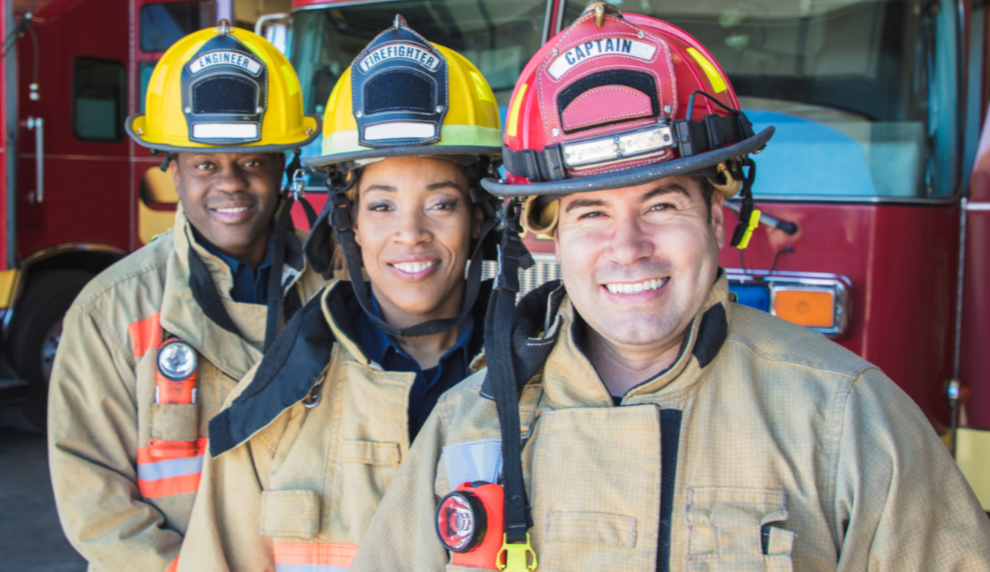Lighting the Way: Breaking Down Barriers in Firefighting Careers

Becoming a firefighter is a dream for many, but in California, it can be a long and arduous journey. The average time it takes to land a firefighting job in the Golden State is between two to five years, but for Chief Felipe Rodriguez, that timeline stretched to seven years. As he put it, “I have wanted to be a firefighter since I was seven years old, and I went ahead and prepared myself and took another [firefighting] test and guess what? You don’t make it. Seven years later, I got the call.”
Unfortunately, Chief Rodriguez’s story is not an outlier. Many aspiring firefighters are facing similarly long timelines to achieve their dream job. With a shortage of firefighters throughout the state, the requirements for prospective firefighters have increased, and the training times have become longer. This bottleneck is preventing many people from pursuing their dreams of becoming a firefighter.
To explore this issue, Valley Vision, in collaboration with Los Rios Community College district, held a regional firefighting careers advisory in the Greater Sacramento Region on April 5th. Panelists, labor market experts, and community college representatives all shared their insights on the challenges facing prospective firefighters in the region. It’s clear that California needs to do more to ensure that future firefighters are able to pursue their passions without facing unnecessary barriers.
The event featured a keynote from Felipe Rodriguez, Chief of Cosumnes Fire Department, a statewide firefighting labor market report from Sara Phillips, Regional Director of the Far North Center of Excellence, and local firefighting career data from Ebony Benzing, Research Manager for the North/Far North Center of Excellence. The Fire Advisory had a regional industry panel that included:
- Christopher McCandless, US Forest Service, District Fuels Specialist
- Arianna Duran, CAL FIRE, Associate Governmental Program Analyst
- Julie Ride, Cosumnes Fire Department, Fire Captain
- Tim White, Sac Metro, Firefighter
- Lawrence Whang, Sacramento Fire Department, Fire Captain
At the beginning of the event, Phillips provided statewide labor market information on entry-level firefighting careers, demonstrating that local and municipal departments typically have the most stringent pre-employment training requirements, with the Los Angeles Fire Department requiring 560 hours of pre-employment training. Firefighters at the municipal/county level start out as reservists or volunteers until they have their Firefighter 1 and EMT/Paramedic Certifications, complete in-house firefighting training, and obtain state certification. High school degrees are required, but to be promoted to higher level positions, most individuals require an associate’s degree. Outside of local and municipal hiring, federal agencies and private contractors typically have lower pre-employment training requirements, but can have complicated hiring procedures at the federal level. Staffing patterns show that local agencies comprise 93% of firefighting employment in the state. At the local level, Benzing provided labor market information on firefighting and prevention jobs for the Greater Sacramento region. The findings showed a 7% projected change in job growth for the Greater Sacramento region, double that of the state of California. Within the last three years, there have been 618 unique online postings for firefighting jobs. While job growth is projected to outpace the state as a whole, both Benzing and Phillips stated that when qualitative interviews were conducted, key stakeholders explained that there is a shortage of firefighters in different departments.
The panel discussion emphasized the importance of hiring diverse candidates, a need for more paramedic firefighters, and removing bottlenecks to increase qualified candidates. Panelists agreed: the challenges to recruiting diverse candidates are cultural barriers and the cost of different qualifications. Captain Rider explained these hurdles by stating: “There are so many people that can walk into law enforcement agencies or public safety, but when they come to fire and see that there’s a process, it’s not like they can just join the fire department and they automatically get a job… we’d prefer that they have experience.” Panelists highlighted that reaching out through the region to different partnerships and community partners is an effective way to expand their reach, but more work needs to be done to remove barriers like cost to the firefighting careers process.
To create a more proactive firefighting career pipeline, firefighter Tim White highlighted successful methods of outreach for students, citing career technical education (CTE) programs as the most effective method that they and other local fire departments have found to inform young students about achieving a career in the firefighting industry. Most panelists had similar experiences with the success of CTE in high schools, with Captain Whang highlighting two high schools, Inderkum and Valley High, as being successful fire youth academies. Their current youth academies offer a 30-week academy of local Sacramento students, and at week 25 the academies have kept 31 out of the 31 students that started the program.
As our region works towards building a more inclusive and equitable firefighting workforce, increasing CTE programs, removing barriers to receiving certifications, and providing the necessary education for diverse applicants is vital to meet the diversity and talent needs of the industry.
To keep up with Valley Vision’s work to advance a future-ready workforce in the Sacramento region, subscribe to our 21st Century Workforce email newsletter!